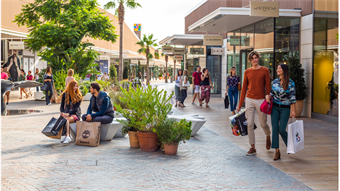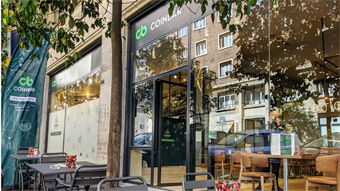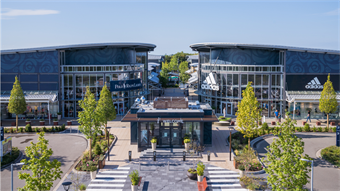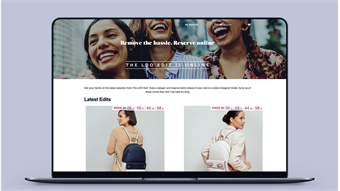From Instagram influencer to in-store, in two hours
- In Innovation
- 17:48, 10 maart 2020
- 3759 Views
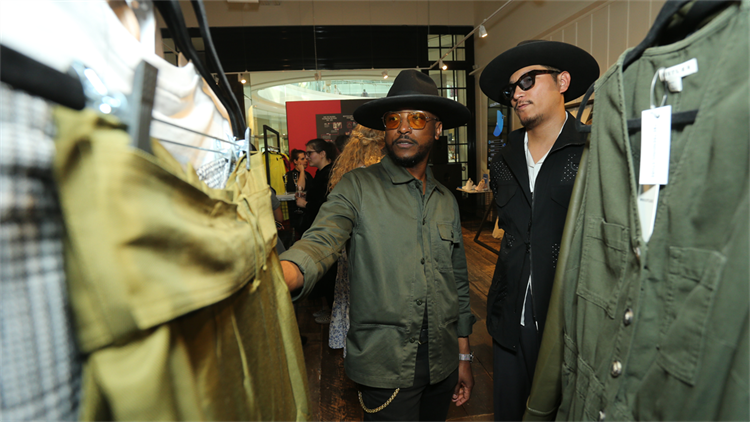
Last summer, Unibail-Rodamco-Westfield launched an experimental, physical store at Westfield London in collaboration with AI-powered trend predictors NextAtlas. The results were fascinating
As retail sales race online, it’s a nerve-racking time to be a shopping centre landlord. Between 2019 and 2022, the share of offline sales in the US and Western Europe is expected to decrease by 2.9% to 82.4% according to the Boston Consulting Group. In comparison, the total volume of sales in e-commerce will exceed a trillion dollars in 2020, amounting to some 16% of retail sales.
All this isn’t helped by the generational shift: the research goes on to show that Millennials and Gen Z shoppers now prefer to shop online in higher and higher percentages. In the European panorama, this trend is perhaps most acute in the UK, contributing to a steady decline in the number of retail stores and driving retailer collapse.
So what do you do if you’re not merely a retail landlord – but the biggest retail-led landlord in Europe? Unibail-Rodamco-Westfield has decided to embrace the online shift, with a raft of experiments that suggest the most popular malls can still hope to drive footfall in a significant way – if they can learn from online success stories.
E-commerce studies show that the benefits of online shopping include convenience, selection, and technology’s ability to promote items the shopper might never have seen. To attract buyers to their brick-and-mortar stores and build sales, landlords need to find a way to both match these online conveniences, and provide a fully interactive shopping experience.
T#e Trending Store
Last summer, Unibail-Rodamco-Westfield launched an experimental, physical fashion store at Westfield London in collaboration with AI-powered trend predictors NextAtlas.
Dubbed T#e Trending Store, the pop-up boutique had a simple but unique concept. It would be a showroom for the world’s most cutting-edge fashion trends, by capturing them from social media accounts and translating that into a selection of diff erent garments and accessories displayed in-store. The showroom would not only change its contents every day, but would interpret the top trends on Instagram and transform them into a physical selection of available items in about two hours.
‘To crunch that kind of information, you need a powerful algorithm – and that’s where we came in,’ explains Erich Giordano, business development lead of boutique Italian AI-led coolhunters, NextAtlas. NextAtlas offers a service in which it identifi es breaking trends virtually before they happen, by monitoring over three billion data points from over 400,000 ‘trend innovators’ globally, using an algorithm that analyses both visual and text content from social media sources.
‘They wanted to make their store more effi cient in understanding and managing trends. Our system tracks trends almost in real time,’ Giordano says. ‘One of the key problems aff ecting fashion retailers is the fact that this is a very saturated world, and stores are full of stock which doesn’t get sold. But that’s because the items don’t meet the tastes or expectations of the public. So the idea of the Trending Store was to respond to that problem, by connecting to the hottest trends and therefore meet consumer demand more eff ectively.’
To make it work, data had to become a physical offer in a very short space of time. ‘NextAtlas would send over the trend data by a certain hour of the morning – including mood boards, colours, sample items – and then T#e Trending Store stylists would hit Westfield to find items from the neighbouring stores to stock the pop-up,’ Giordano explains. Ultra HD screens in-store showcased live trend data and visual inspiration.
Brand collaboration
With collaboration from brands including Topshop, Reiss, Whistles, Lindex and Stuart Weitzman, this meant that the store was not only a way of defining the centre’s cool credentials, but a platform to promote its other tenants as well. ‘Every day, the store looked completely different and fresh,’ Giordano confirms.
‘We combine data from social media, from a pool of early adopters identified worldwide by our algorithms: this allows us to see what they are publishing on a daily basis,’ he notes. ‘Their ideas are not yet mainstream so we are really at the forefront of fashion, not collating phenomena that have already broken in the industry.’
Clearly, this kind of information is vital at every stage of the retail game. ‘It can be used in the earliest stage of designing a collection, or by buyers who want to avoid stock obsolescence,’ Giordano says. It’s application also goes far beyond fashion. ‘We don’t just work with fashion – but a wide range of designers and retailers including food as well,’ Giordano explains.
‘We have access to a pool of retail and industry experts who have wide ranging interests and areas of expertise, from food to fashion and home and gardens. We see that there are phenomena that actually transcend all sectors, driving what are called transversal trends.
‘The implications are huge for retail and supply chains in general,’ Giordano enthuses. ‘The closer and the faster that AI can get to capturing the zeitgeist, the better we can shape the consumer world.’


